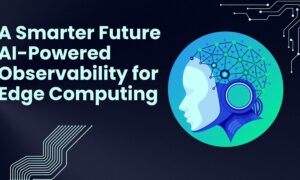In the ever-evolving landscape of technology, a paradigm shift is occurring with the rise of Edge Computing. This revolutionary concept is reshaping the way we process and analyze data, promising faster response times, reduced latency, and enhanced overall performance. In this blog post, we will delve into the magic behind Edge Computing and explore its operational mechanism, shedding light on how it is poised to transform the digital realm.
Understanding Edge Computing
To comprehend the magic of Edge Computing, one must first grasp the concept itself. Unlike traditional cloud computing, which centralizes data processing in remote data centers, Edge Computing distributes this processing power to the “edge” of the network – closer to the data source. This decentralized approach minimizes latency and enables real-time data processing, making it a game-changer for applications that demand instantaneous responses, such as Internet of Things (IoT) devices, autonomous vehicles, and augmented reality.
Operational Mechanism of Edge Computing
- Proximity to Data Source:
Edge Computing operates on the principle of proximity. Instead of sending data to a centralized cloud server for processing, it leverages computing resources located closer to the data source. This reduces the physical distance that data must travel, resulting in significantly lower latency and faster response times.
- Distributed Architecture:
The magic behind Edge Computing lies in its distributed architecture. Rather than relying on a single, centralized processing hub, Edge Computing utilizes a network of decentralized nodes. These nodes can be strategically placed at the edge of the network, ensuring that computation happens as close to the data source as possible.
- Real-Time Data Processing:
One of the key operational mechanisms of Edge Computing is its ability to process data in real-time. This is crucial for applications that demand instant decision-making, such as autonomous vehicles that require split-second reactions to changing road conditions. By processing data at the edge, delays associated with data transmission to a remote server are eliminated.
- Optimized Bandwidth Usage:
Edge Computing optimizes bandwidth usage by processing data locally. This not only reduces the strain on network bandwidth but also ensures that only relevant data is transmitted to the cloud for further analysis. This is particularly beneficial in scenarios where bandwidth is limited or expensive.
- Enhanced Security and Privacy:
Security is a top priority in the digital age, and Edge Computing addresses this concern by keeping sensitive data closer to its source. This decentralized approach minimizes the risk of data breaches during transit to a central server. Additionally, as data remains within a specific geographical location, Edge Computing enhances privacy compliance, a critical consideration in various industries.
- Scalability and Flexibility:
The operational mechanism of Edge Computing allows for seamless scalability. As the number of connected devices and data sources increases, additional edge nodes can be deployed to accommodate the growing demand. This inherent scalability ensures that Edge Computing remains adaptable to evolving technological landscapes.
- Optimized Resource Utilization:
Edge Computing optimizes resource utilization by distributing computing tasks across multiple edge nodes. This prevents overloading a single node and ensures that resources are allocated efficiently. As a result, the overall system performance is enhanced, contributing to a more reliable and responsive infrastructure.
- Edge Computing in Action:
To truly appreciate the operational mechanism of Edge Computing, let’s explore a hypothetical scenario. Imagine a smart city with numerous IoT devices, such as traffic cameras, environmental sensors, and smart streetlights. In a traditional cloud computing model, the data from these devices would be sent to a centralized server for processing, leading to delays in decision-making and increased latency. However, with Edge Computing, each device becomes an edge node capable of processing data locally. Traffic patterns can be analyzed in real-time, and smart streetlights can autonomously adjust based on the immediate needs of the area, optimizing traffic flow and enhancing overall efficiency.
- Edge Computing and 5G Synergy:
The synergy between Edge Computing and 5G technology further amplifies the magic behind this innovative approach. The high-speed, low-latency capabilities of 5G networks complement Edge Computing by ensuring that data can be transmitted quickly between edge nodes. This collaboration is especially crucial for applications like augmented reality and virtual reality, where responsiveness is paramount. As the deployment of 5G networks continues to expand, Edge Computing stands to benefit significantly from the enhanced connectivity.
- Edge Computing Challenges and Solutions:
While Edge Computing offers numerous advantages, it’s essential to acknowledge the challenges associated with its implementation. One such challenge is the need for robust infrastructure at the edge, which can be costly to deploy and maintain. However, advancements in edge hardware and the development of edge-specific processors are addressing these challenges. Additionally, managing a decentralized network requires sophisticated orchestration and monitoring tools to ensure optimal performance. Overcoming these challenges is crucial for realizing the full potential of Edge Computing.
- Edge Computing in Remote Locations:
The operational mechanism of Edge Computing extends its reach even to remote and inaccessible locations. In scenarios where maintaining a stable connection to a centralized data center is impractical, Edge Computing becomes a beacon of efficiency. For example, in offshore oil rigs or mining operations, where internet connectivity might be intermittent, local edge nodes can process critical data, ensuring continuous operations without dependence on a constant connection.
Use Cases Across Industries
The magic of Edge Computing is evident in its diverse applications across industries. In healthcare, it facilitates real-time monitoring of patients through wearable devices. In manufacturing, it enables predictive maintenance of machinery. In retail, it powers personalized customer experiences. The operational mechanism of Edge Computing is versatile, making it a transformative technology across various sectors.
Conclusion
The magic behind Edge Computing lies in its operational mechanism, which prioritizes proximity, decentralization, and real-time processing. As the digital landscape continues to evolve, the demand for faster, more efficient computing solutions is at an all-time high. Edge Computing emerges as a solution that not only meets but exceeds these expectations, offering a paradigm shift that unlocks new possibilities across industries. As we continue to unveil the magic behind Edge Computing, it becomes clear that this transformative technology is poised to shape the future of digital innovation.


































